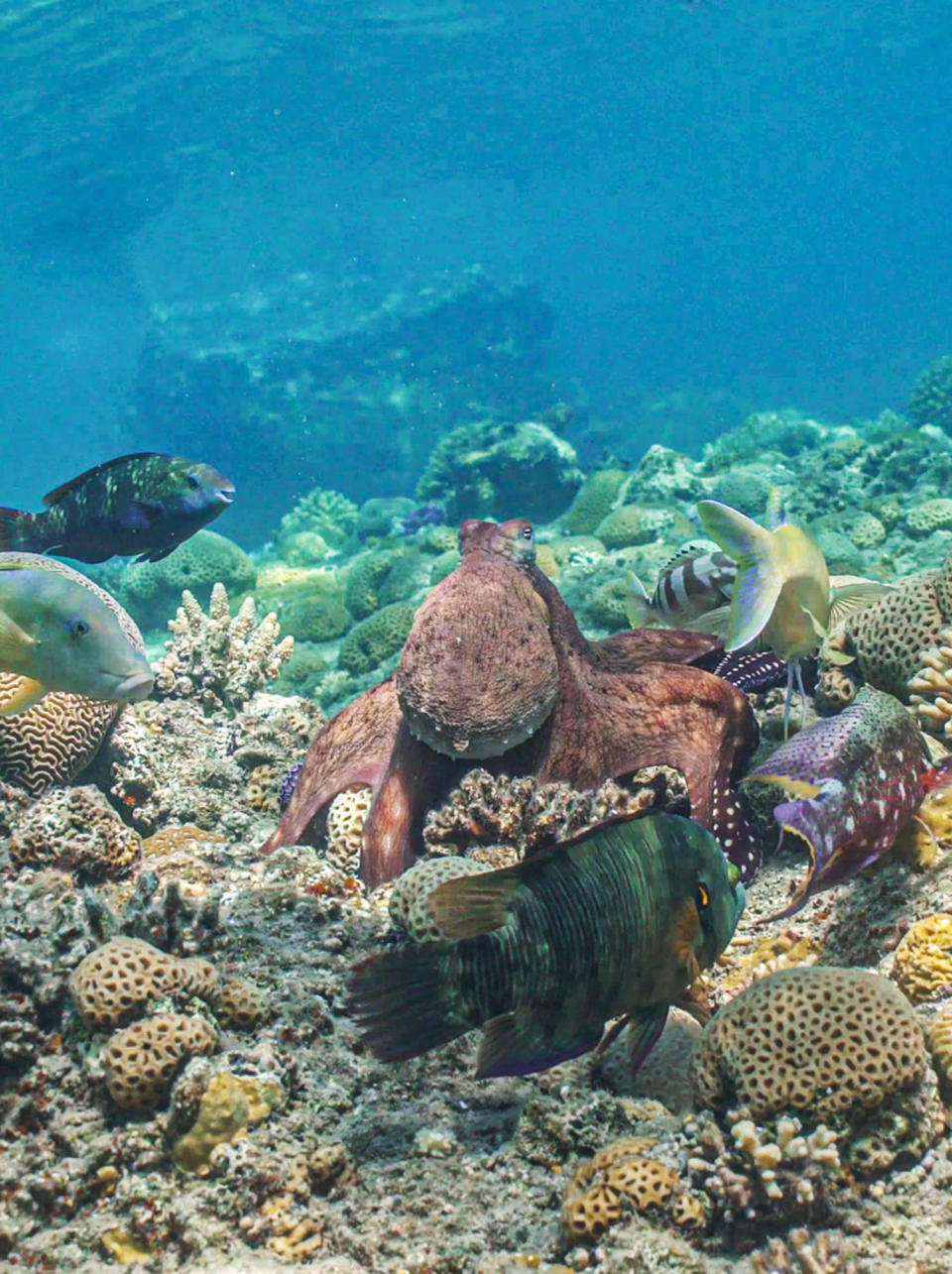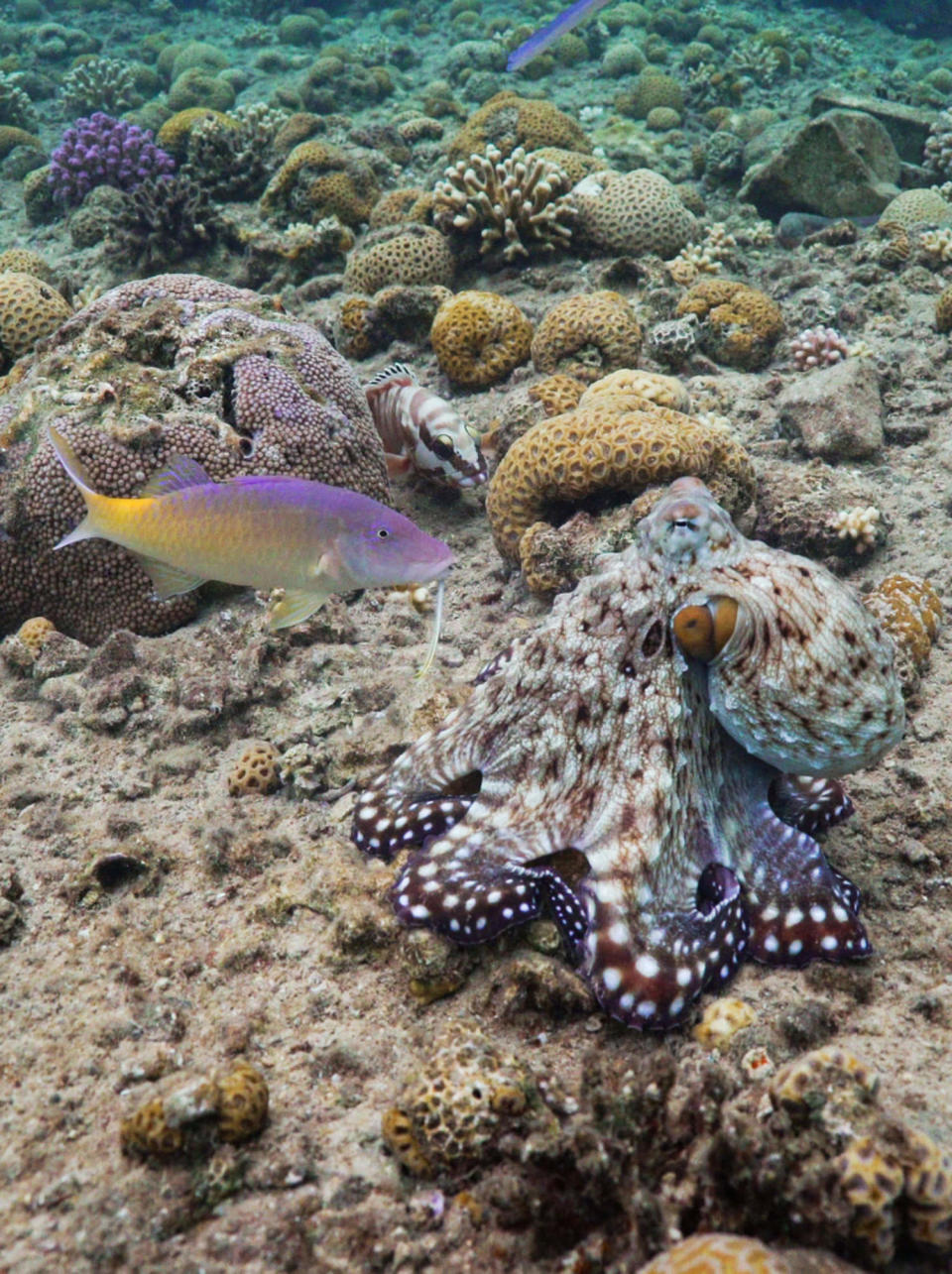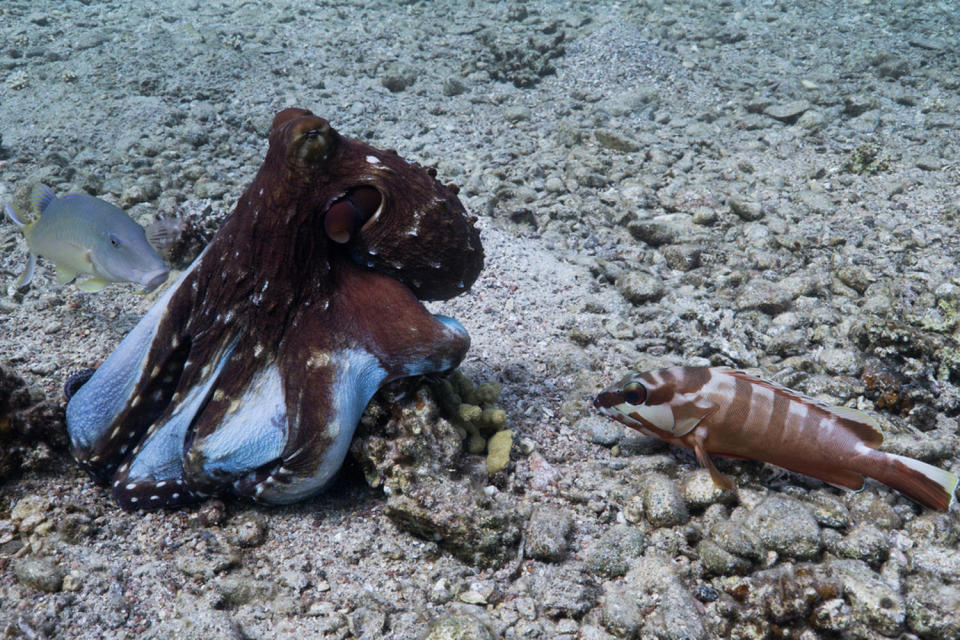Octopuses don’t always hunt alone, but their partners aren’t who you might expect either.
A new study finds that some members of the species Octopus cyanea roam the seafloor in hunting groups with fish, sometimes consisting of several fish species at once.
The research, published Monday in the journal Nature, even suggests that the animals, known for their intelligence, organized the hunting groups’ decisions, including what they would prey on.
In addition, the researchers observed the squid species – often called the great blue octopus or day octopus – striking social fish, apparently to keep them focused and contribute to the collective effort.
Octopuses are often thought to avoid other octopuses and only move around using camouflage. But the research suggests that some octopuses have surprisingly rich social lives — a finding that opens a new window into the wonders of life underwater. It’s an indication that at least one octopus species has traits and markers of intelligence that scientists once thought were exclusive to vertebrates.
“I think sociality, or at least attention to social information, is much more deeply rooted in the evolutionary tree than we might think,” said Eduardo Sampaio, a postdoctoral researcher at the Max Planck Institute for Animal Behaviour and the study’s lead author.
“We are very similar to these animals,” he added. “In terms of consciousness, they are much closer to us than we think.”

To understand the inner details of octopus life, researchers spent about a month diving on a reef off the coast of Eilat, Israel, and followed 13 octopuses for a total of 120 hours using a variety of cameras. The team followed the octopuses for 13 hunts, observing groups of two to 10 fish interacting with each octopus.
These hunting groups were usually made up of various reef fish species, such as groupers and goatfish. The octopuses did not appear to lead the groups, but they did strike at fish to maintain social order—most often blacktip groupers.
“The ones who get beaten the most are the main exploiters of the group. These are the ambush predators, the ones who don’t move, don’t go looking for prey,” Sampaio said.
Octopuses also struck fish to keep the group moving.
“If the group is very quiet and everyone is around the octopus, it starts hitting, but if the group is moving around the habitat, it means they are looking for prey, so the octopus is happy. It doesn’t hit anyone,” Sampaio said.
The researchers believe that fish benefit from such hunting groups because an octopus can reach into crevices where prey is hiding and dig out lunch. The octopus benefits, they believe, because it can simply follow the fish to food, rather than what the researchers call speculative hunting.
“For the octopus, it’s also an advantage because it doesn’t have to sample or go around the environment,” Sampaio said. “You can just look at the fish.”
After recording their video, the researchers entered all of their hunting scenes into software that created a three-dimensional display, and then used another program to track each animal and log its position relative to others. The data allowed the researcher to measure how close the creatures stayed together and which creatures anchored or pulled the group in one direction or another.
The data showed that a particular species of fish, the blue mullet, ran off and led the hunting groups in that direction. However, the group of fish would hang around if the octopus did not immediately follow.
The goatfish “are the ones that scout the environment and find prey,” Sampaio explained. “The octopus is the decision maker of the group.”


The researchers saw no evidence that the creatures shared prey. All the species involved are generalists that eat crustaceans, fish and mollusks, but whoever managed to catch the prey got a meal.
However, questions remain, such as whether certain octopuses recognize their favorite fish friend or prefer to hunt with it.
“Is there a recognition of the individual?” Sampaio said. “Do I want to follow the blue goatfish or do I want to follow Martha because I’ve hunted Martha before?”
It is also unclear whether octopuses learn this social hunting behavior or whether it is innate.
“I think it’s something they learn, because the smaller octopuses seem to have more trouble cooperating with the fish than the larger ones,” Sampaio said.
Jonathan Birch, a professor of philosophy at the London School of Economics who studies animal consciousness and was not involved in the new research, said he was impressed by the hours of video evidence the scientists collected and by the careful coding of the video to quantify the relationships between the creatures.
“It’s a significant step beyond what you see in nature documentaries, where individual behavior is filmed,” Birch said.
He also appreciated that the study’s observations were made outside of a laboratory setting, where much animal cognition research takes place. Octopuses can be difficult to study outside of their natural habitat. “They just seem to be much more expressive in the wild and capable of much more,” he said.


Some scientists advocate a theory of evolution called the social brain hypothesis, which suggests that primates and other animals have evolved large brains to process social information and cooperate with others.
“Octopuses were seen as a problem because they were thought to be intelligent yet solitary, so researchers have long puzzled over what was going on there,” Birch said.
That left two possibilities: Either octopuses were indicating that there were pathways to intelligence beyond social information, or scientists were missing some hidden part of octopus lifestyles that fit with the theory of social intelligence.
“This study seems to shift the balance a little bit toward that second theory,” Birch said. “For at least one species of octopus, there is a pretty rich social life.”
This article was originally published on NBCNews.com